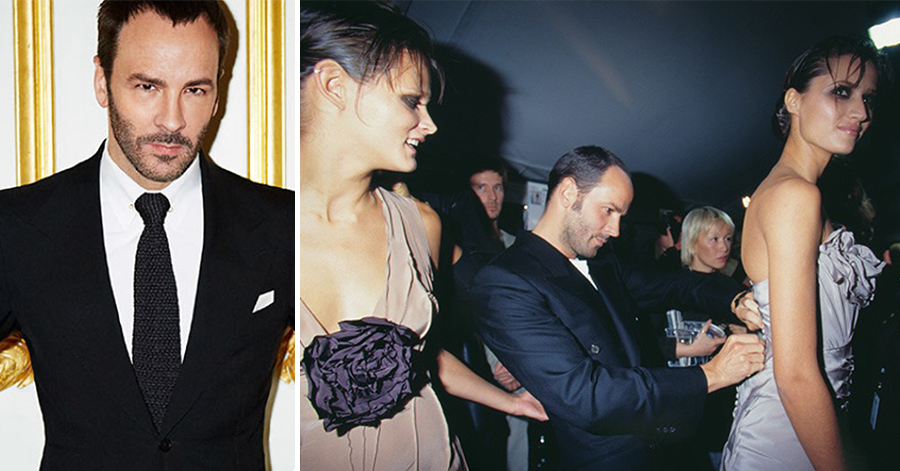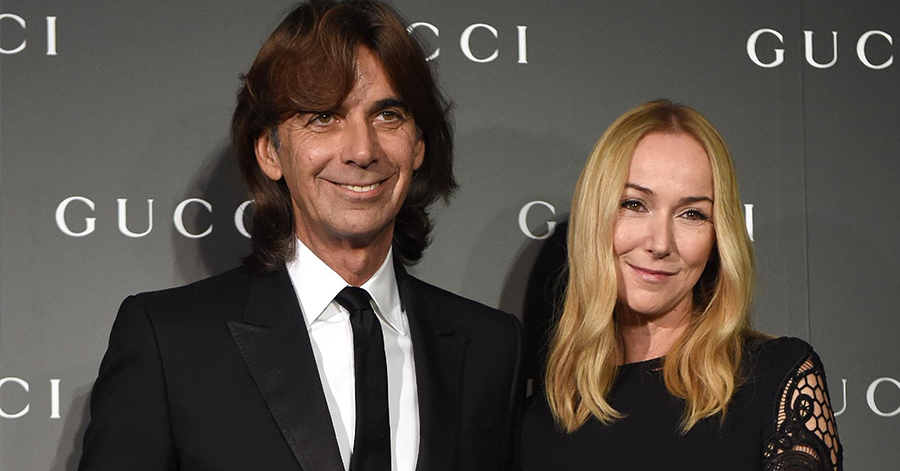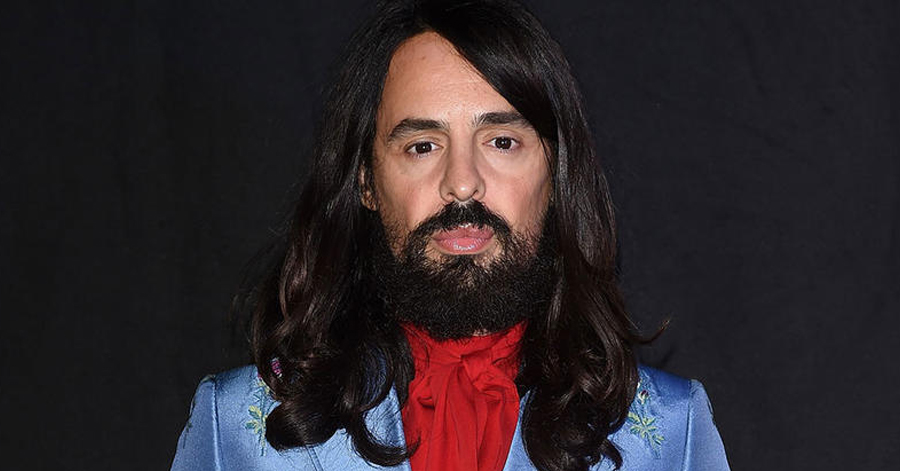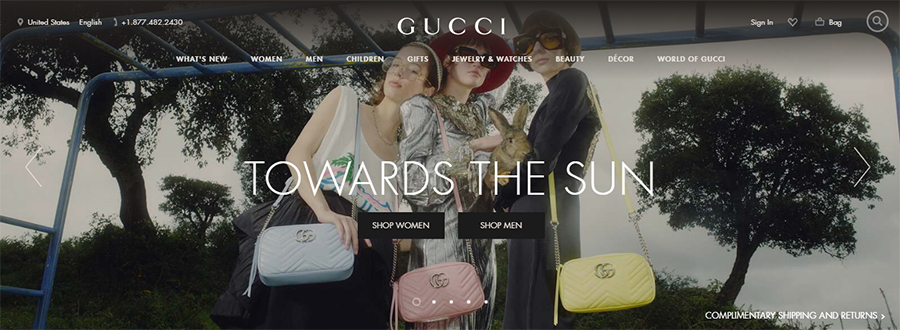- Blog
- Brand Story
- Italy
The Gucci Saga - Brand Story of The House of Gucci
- 13th May 2020
- 5602
- 0

Gucci is one of the most eminent fashion luxury brands today, owned by the Kering Group. It stands for its contemporary designs that represent the pinnacle of fine craftsmanship. The history of Gucci and its story through the years, is a fantastical journey of a brand that has established itself as the master of novel and versatile extravagance.
THE ORIGINS
Guccio’s Journey

Source : https://bagista.co.uk/blogs/news/gucci-brand-story
Guccio Gucci’s humble beginning as an immigrant hotel worker in Paris and London, offered him a chance to observe the high-society. While working at the Savoy Hotel in the late 1890s, he was enraptured by the luxurious luggage and belongings of the guests staying there. In a few years, Guccio returned to his native Florence, a city distinguished for its fine artisans, and started working for the tony luggage brand, Franzi. By 1920, Guccio was ready to embark upon his own adventure and in 1921, the story of Gucci began as Guccio opened two stores in Florence - on Via Vigna Nuova and then Via del Parione.
Gucci in its infancy, was a business of saddles and other horse-back riding accessories, handmade out of the most exquisite Italian leather. As Gucci’s creations gained fame, an increasing number of European aristocrats became fans of the label. Even today, the influence of this inception can be detected in Gucci designs - like the horse bit icon adorning Gucci bags and original Gucci loafers.
In the 1930s, as a result of League of Nations’ embargo against Italy, Gucci had to come up with alternatives to imported leather. The first signature pattern of small, interconnecting diamonds on a tan or dark brown background woven from hemp was developed. The Gucci Bamboo Bag was also invented around these times inspired by the shape of the saddle; the treatment of Japanese bamboo patented by the brand. Soon, the web of green and red bands on canvas became a signature icon of Gucci.

Source : https://www.georgettemagazine.com/magazine/the-story-behind-guccis-iconic-bamboo-bag
In 1938, the Rome store opened on Via Condotti and Gucci’s son, Rodolfo, opened the first store in Milan in 1951. In 1953, Gucci became synonymous with fine Italian craftsmanship in the U.S., when Aldo opened the first American store on the 58th street in New York. Guccio Gucci passed away just 15 days after the opening of this boutique. Nevertheless, his brand advanced and grew as it was embraced by the American celebrities. In a few years, it was moved to the 55th Street, next to Hotel St. Regis.

Source : https://ussur-ds106.ru/pt/guchchi-brend-kakoi-strany-guchchi-istoriya-i-produkciya-brenda-gucci-sudba/
Gucci flourished in the decade that was to come. Film stars and jet-set stylers brought much glamour and fame to the brand - they posed in Gucci’s fashionable ensembles and endorsed the Gucci quality turning it into a status symbol for luxury. The House’s double G crest was trademarked and merchandise was emblazoned with the Gucci logo.

Source : https://luxity.co.za/10-fun-facts-about-gucci/jackie-kennedy-gucci-jackie-bag/
The Gucci bag Jackie Kennedy accessorised her outfit with in public, also brought a lot of recognition to the brand and purse was officially named “The Jackie.” One day, the Princess of Monaco, Grace Kelly stopped by to pick up a Bamboo Bag and in a graceful gesture, Rodolfo Gucci asked the artisans to design a special scarf for her. The delicate floral print became a signature known as “Gucci Flora,” depicted through 37 vibrant colours that took form of 43 types of flowers, plants and insects.

Source : https://thehula.com/blog/looking-at-legends-gucci/
The brand expanded into the oriental markets with its first boutique opening in Tokyo in 1972 and a second flagship store in Hong Kong soon after. It also sported a select New York store focusing on clothing and another one dedicated to shoes, luggage and other accessories. The fragrance collection commenced since the first Gucci Perfume launch in the 1970s. The brand also debuted with their first ready-to-wear collection.
However, the Golden Era of Gucci was fizzling as bitter internal family politics brought the brand to the brink of bankruptcy. Rodolfo’s son, Maurizio, proved to be an unsuccessful president and sold the family-owned business to Investcorp. Meanwhile, Aldo was arrested for tax evasion. To revitalize the brand, then-president of Bergdorf Goodman, Dawn Mello, was hired. She brought with her, Richard Lambertson, then head of Bergdorf’s accessories department, to be design director for Gucci. Soon, Tom Ford was hired as the designer for women’s ready-to-wear collection. In 1993, Maurizio transferred the remnant of his 50% share of Gucci to Investcorp, ending the family’s involvement in the renowned brand.
THE BECOMING
The Eld Gucci
Although Dawn Mello was brought in to revive the brand, the real credit for the resurgence of Gucci goes to Tom Ford. Dawn Mello left Gucci in 1994 and with that, Tom Ford took the reins of Gucci’s fashion as the appointed creative director. The designer entirely changed the brand’s storytelling and crafted a new space for Gucci in the glamorous luxury fashion business. “Sex sells” was personified by Gucci ads as Tom Ford backed by his go-to team of Mario Testino as the photographer and Carine as the stylist started pushing the limits of censorship and scandal. The glossy finish polished campaigns emanated sexuality and incited desire and seduction. One of the most memorably controversial campaigns of Gucci was the 2003 pubic hair ad. And it worked! Gucci’s change in the brand story design led to it becoming a $10 bn dollar enterprise.

Source : https://www.sleek-mag.com/article/why-tom-fords-tenure-at-gucci-was-so-memorable/
In 2004, the company underwent a hostile takeover by Pinault Printemps Redoute and a failure to arrive at mutually acceptable contracts, led to Tom Ford and Domenico De Sole, Gucci Groups CEO from 1995, leave the brand. The next two years Gucci women was led by Alessandra Facchinetti until her departure in 2005. Facchinetti’s evacuation coupled with Frida Giannani’s successful relaunch of Flora bag collection provided a golden opportunity for her to be appointed as the creative director of women’s rtw and eventually, Giannani was promoted for the top job.

Source : https://news.yahoo.com/gucci-power-couple-leave-brand-075939489.html
Giannani’s brand storytelling moved away from Ford’s sex appeal and sought to revive and revamp the Gucci classics. Then-CEO of Gucci, Patrizio di Marco, and Giannani were rumoured to have a steamy relationship which was later disclosed publicly. In 2013, they welcomed their baby girl Greta and got married in 2015. During their tenure, the first Gucci TV campaign was aired and the “Gucci Playground” was launched - the first app dedicated to children’s wear. Giannani’s traditional transferred to contemporary approach, although compelling initially, later grew prosaic and banal. Gucci started being associated with gaudiness and was perceived, ultimately, as outdated. As a result, in 2014, Frida Giannini and Patrizio di Marco both stepped down from Gucci and Marco Bizzarri was appointed CEO of the brand.
THE AGE OF AVANT GARDE
The House of Gucci Today
Alessandro Michele was appointed as the creative director for the House of Gucci in 2015 following a complete redesigning of the Gucci Men Collection just 5 days before they were seen on the Fall/Winter Runway of 2015. His first women’s wear collection in Milan was well-received and declared a smashing success establishing Michele’s ascendancy.

Source : https://phantomag.com/alessandro-michele-il-designer-di-gucci/
The blend of Michele’s unique fashion disposition and Marco Bizzarri’s focus on reinventing luxury has put Gucci back on top in the luxury fashion segment. Their extraordinary vision has gained critical appreciation and their exceptional vision has encouraged the younger generations bond with the brand. The imaginative Gucci designer’s approach can be embodied through the words “eclectic, contemporary and romantic.” In the years since his appointment, Michele has turned the brand around as a maximalist fantasy opposing the symmetry of fashion and encourages the clientele to be individualistic.
Michele’s ambition to create an entirely novel Gucci universe - an inclusive one - has led to the embracing of technology by the House of Gucci. In 2017, the brand revealed a 43% revenue increase in the last quarter and reported that millennials make up 55% of all Gucci sales. The 2018 Gartner L2 reports revealed Gucci as the leader in the world of digital and social media.
Gucci completely revamped their website making it more visually aesthetic. This led to 150% increase in traffic to the website. Today, the Gucci site showcases collections on the home page that are romantically modern and also emphasise the heritage of the luxury brand. It seamlessly intertwines the classical and the current offering a holistic experience of what the brand stand for. The Gucci App is a rendition of digitalisation and is a completely functioning touchpoint, instead of just a front for being “an app available digitally.” It even features a Gucci gaming arcade, which from personal experience, is addictive. The brand’s efforts to stay relatable all the while maintaining its status is an exemplary undertaking.

Source : https://www.gucci.com/us/en/
Gucci’s social media is also always buzzing as the brand posts a minimum of twice a day. Their engagement numbers are enviable and the visually exhilarating content inspires their audience to aspire for the Gucci-lifestyle. The brand makes use of the visual network Instagram the most, followed by Twitter and Facebook. Their artwork enforces the romantic appeal of their contemporary designs; there’s an old-world drama and charm to their posts. Videos with pop colours make up a lot of their Instagram content. A separate account “Gucci Beauty” was created to communicate better with their millennial clientele.
Gucci has achieved maximum visibility through many different campaigns conducted specifically over social media. The hashtag #GucciGram has more than 16,000 posts whereas #TFWGucci was a rage in the 2017s. The innovative use of memes to brand extravagance was something no brand had ever ventured into before. In 2017, Gucci streamed a runway show for their new fashion line made from Panda fur on Facebook live. It generated a lot of chatter and created backlash for the brand. Three weeks later, Gucci revealed that the fur had been synthetic and announced that they would no longer be using real fur for any of their products. Using the power of social media, Gucci tricked the world into caring. Gucci’s latest social media campaign “A busy bee has to time for sorrow” combines the #GucciTimepieces G-Timeless with illustrations as a part of a series of works created by international artists to celebrate the automatic Gucci watch designs featuring indexes that take the form of bees.
Allesandro Michele’s genius of interweaving the old world luxury of Georgian and Victorian history with the punk modernity of today that champions the ideas of self-expression, the contemporary Gucci has fortified its position in the luxury world by taking a radical approach to the art of fashion.
 Rajeshwari Patwardhan
Rajeshwari Patwardhan


Comments
No comments yet.
Add Your Comment
Thank you, for commenting !!
Your comment is under moderation...
Keep reading luxury post